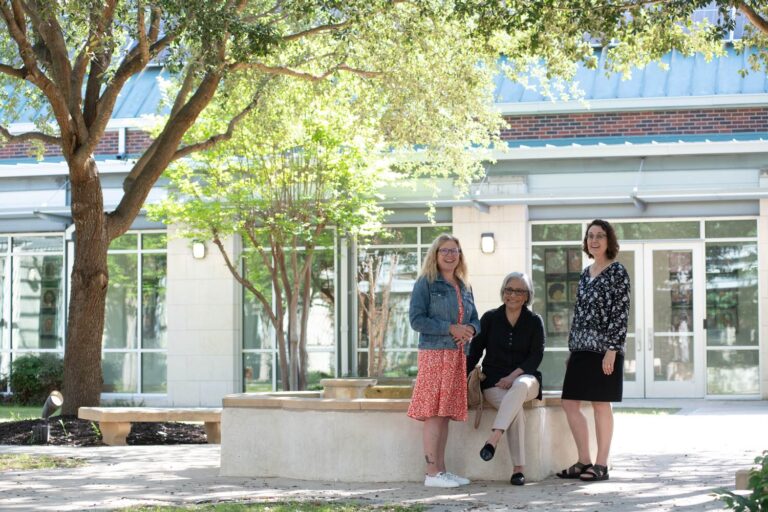In our lives and in our prayer practice, we often opt for two different types of spirituality:
1) A spirituality of duty, which is focused on the things we must do, is about realizing the desire of others for our spiritual lives (religious authority figures, our parents, etc.…). It is based on a distrust of our emotions and an over-reliance on “objective” virtues (I have to be good, just, and generous…). In this form of spirituality real growth is stunted because it lacks the commitment necessary to take ownership and be personally engaged in our spiritual progress.
2) A spirituality of need is oriented towards frantic search of consumer products, even spiritual ones, in order to live intensely and freely. It is an à la carte spirituality, which drives an insatiable need for books, courses, resources and people in order to satisfy our spiritual needs. In fact, it is more appropriate to call this a form of anti-spirituality since we are much more than our needs. In addition, there is a perpetual dissatisfaction that creeps in when you live and stay hooked on the whims of the moment and feel-good prayer.
It is a spirituality of desire that meets our deepest aspirations, because it is based on the encounter with the other and plunges us into a new birth in God’s love. It does not reduce us to our needs or our duties and calls us beyond our self, to deepen our identity as a gift from God. A spirituality of desire includes and honors our needs and duties yet moves beyond them. The gift of the presence of Jesus is welcomed with joy and gratitude and leads us to understand that the best way to deepen this gift is to live in the deepest aspiration of our being. “If you knew the gift of God, and who it is that is saying to you, “Give me a drink,” you would have asked him, and he would have given you living water (John 4:10).
A spirituality of desire makes us appreciate that we are all mystics in the sense that the interior space that is in us is a privileged place of encounter with God. In all of us there is a huge desire to find and love God through our whole being: our feelings, our body, our mind and our soul. A mystical desire is present in the everyday life. It can be articulated from three vectors that are similar to the traditional three stages/phases of the mystical life.
THE POSITIVE WAY: The Rose; this path is based on a rehabilitation of our deepest desire; it means wanting to develop our openness to God as it is made manifest in our daily life, in creation, in all our loves and friendships, and in the many relationships that often beckon us, embodying God’s desire for us. This path is often associated with a prayer that is stimulating and varied; it is filled with consolations that invite us to develop our religious imagination. It may even lead to ecstasy into the dazzling light of God. This true spiritual desire is rehabilitated by cultivating a fundamental attitude of wonder and inviting greater acceptance of our sensitivity as we enjoy human love and the place of the body and emotions in prayer as potential paths to God. This path matches the illuminative phase of traditional mysticism as defined by Origen. Saint Ignatius in his Spiritual Exercises encourages us to develop our spiritual imagination by entering into deeper intimacy with Jesus which enables us to find God in all things. He also invites us to greater indifference by learning to discern what takes us away from God so we may follow Christ more freely and love Him more dearly.
THE NEGATIVE WAY: The dark night: it is a descent upward, a learning to separate and let go of possessions, of our ego and the violence present in all of us. It is learning to walk in the dark. This way is often associated with emptiness or even the absence of God. In this dimension of mysticism, we experience dryness and boredom in prayer. These will in turn pull us into a kind of purging, a purification of all images and feelings. The main thrust of this mystical way is to empty ourselves of all that is not God and accept to become utterly vulnerable and poor. This spiritual poverty depletes us of all knowledge, images of God; of all feelings and sufferings. They are all assumed and purified for God’s desire alone to remain in our center. We especially need to be free of the coercive mechanisms of consumption and our pervasive attachment to material goods as we identify the daily addictions and obsessions related to our work and success-driven society. This freedom releases our natural desire for God. This path is defined as the purgative phase in the traditional definition of mysticism. The desert Fathers and Mothers, Saint John of the Cross, and Mother Teresa of Calcutta, among many others, were familiar with the spiritual fruits associated with this dark night of the soul.
TRANSFORMATIVE WAY: The Rainbow: It is wanting to share the deep desire for God, to stimulate it in others through a fecund activity rooted in contemplation. There contemplation and meditation nourishes apostolic activity rather than turning into an escape from the world. The image of the rainbow in the sky evokes well this third way: the transformation of self and the world are not two separate things, but two sides of the same coin. The rainbow is a symbol of the covenant in the Old Testament. It speaks of the deep connection between God and His people, between heaven and earth. This symbol also speaks of the Christian life as a process, a movement, a lived purpose, a will to bridge the tension between the Kingdom of God that is “already there” but “not yet.” The path of transformation is a mysticism of resistance that is driven by compassion. It does not hesitate to point out injustices through communal witnessing and solidarity with and for the poor. This path corresponds to the unitive phase in the traditional understanding of the mystical life. It involves action for social justice that will lead us to accept marginality and the feelings of being ostracized or misunderstood when the gospel call to love our neighbor and our enemy is lived to the full. Dorothy Day, Martin Luther King, Saint Francis of Assisi, Etty Hillesum and many others were able to see the underlying harmony between contemplation and action in the unitive way. It made them available for the total gift of their lives modeled on the incredible gift of Jesus’ life to reconcile us to God’s self.
It is important to avoid two dangers in our willingness to familiarize ourselves with these three mystical paths: thinking they are too demanding or inaccessible and believing they are reserved for a select few: a spiritual elite cut off from the rest of humanity. It is possible for everyone to live more intensely and more freely in God by choosing to enter a mystical desire with confidence and humility with the help of the Spirit of Jesus who died and has risen from the dead for us. A spirituality of desire is never completed; it is a work in progress; a life pilgrimage lasting our whole life. All three aspects: the positive way, the negative way and the transformative way will lead us to greater spiritual maturity if we dare to listen and expand our desire for God and let ourselves be transformed by His desire for us all.
 Fr. Daniel Renaud, OMI is a priest, religious and itinerant preacher with the Missionary Oblates of Mary Immaculate of the US province. Mentored by Fr. Ronald Rolheiser, OMI he ministers from the campus of the Oblate School of Theology (OST) in San Antonio, Texas. Fr. Renaud has degrees and training in drama education, theology, pastoral ministry, psychodrama and spiritual direction. He has preached retreats to priests, men and women religious, deacons and wives and lay people on desire and mysticism, 12 steps recovery, Ignatian spirituality and Jungian shadow work, ecological conversion, the Beatitudes and human development and grief and life transitions. Fr. Renaud is a member of Spiritual Director International (SDI). His areas of interest are resilience, finding one’s mission and purpose in life, spiritual healing of traumatic relationships and everyday mysticism.
Fr. Daniel Renaud, OMI is a priest, religious and itinerant preacher with the Missionary Oblates of Mary Immaculate of the US province. Mentored by Fr. Ronald Rolheiser, OMI he ministers from the campus of the Oblate School of Theology (OST) in San Antonio, Texas. Fr. Renaud has degrees and training in drama education, theology, pastoral ministry, psychodrama and spiritual direction. He has preached retreats to priests, men and women religious, deacons and wives and lay people on desire and mysticism, 12 steps recovery, Ignatian spirituality and Jungian shadow work, ecological conversion, the Beatitudes and human development and grief and life transitions. Fr. Renaud is a member of Spiritual Director International (SDI). His areas of interest are resilience, finding one’s mission and purpose in life, spiritual healing of traumatic relationships and everyday mysticism.



